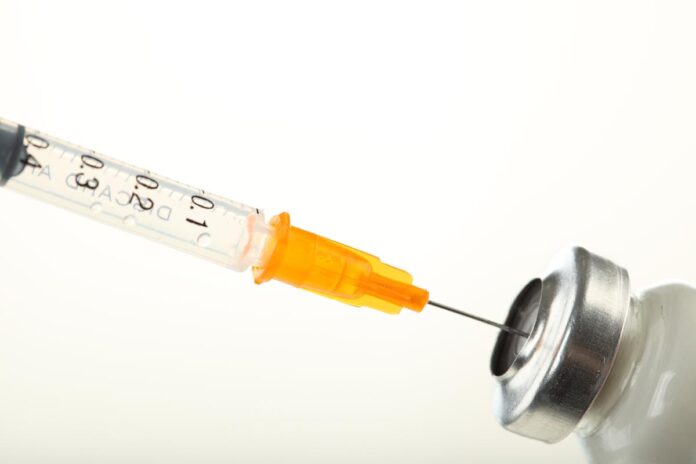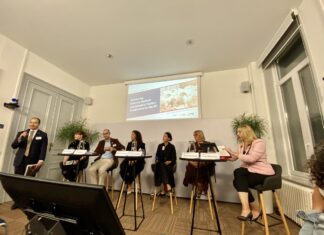
USPOULTRY and the USPOULTRY Foundation announce the completion of a funded researchproject at the University of Georgia in Athens, Georgia, in which researchers evaluated a novel method to vaccinate for infectiousbronchitis viruses. The research was made possible in part by an endowing Foundation gift from Fieldale Farms and is part of theAssociation’s comprehensive research program encompassing all phases of poultry and egg production and processing.
Infectious bronchitis virus (IBV) is an economically important respiratory virus of chickens. Control of the disease caused by IBV is achieved through vaccination with live-attenuated virus strains. However, many serotypes of IBV exist, and there is minimal cross-protection between variants. Disease surveillance and vaccine development is thus a constant, on-going effort to keep up with new and emerging IBV strains.
To date, there are dozens of identified serotypes and hundreds of variants circulating in commercial poultry world-wide. Current control strategies rely on isolating a new IBV variant, determining the serotype through correlation with the spike protein genotype, taking the isolated virus and passaging it through embryonated eggs until the virus has become adapted to embryos and therefore less pathogenic to live chickens (typically over 100 passages), performing efficacy studies, and finally, licensing through governmental agencies for use in commercial poultry. This process often takes more than two years to complete, wherein during that time the virus is uncontrolled in poultry flocks causing significant disease and economic losses.
The goal of this research project was to evaluate the potential for pseudotyped vesicular stomatitis virus (VSV) particles carrying IBV spike proteins on their surface to be used as a vaccine for emerging variant IBVs. The objective was to determine if a novel vaccine production method could be used to shorten the variant-to-vaccine timeline and be efficacious at protection against the new IBVs. Since VSV is non-replicating and would therefore act like a killed vaccine, the strategy was to vaccinate broiler chickens with GA08 IBV spike pseudotyped particles alone or in combination with a live Mass-type IBV vaccine and then challenge with pathogenic GA08 IBV to assess the level of protection developed from vaccination.
The GA08 pseudotyped VSV (GA08-pVSV) particles were created in the laboratory. Two initial studies using an inoculation dose of 16 or 32 HA units were given to specific pathogen free (SPF) chicks via intraocular/intranasal routes or via intramuscular (IM) injection. The chicks were then bled to measure antibody levels. The chicks given 32 HA units of GA08-pVSV via the IM injection route showed a small antibody response, but production of GA08-pVSV at 32 HA units was not continually achievable in the laboratory, so an inoculation dose of 16 HA units and IM route was chosen to proceed with the full vaccine challenge experiment.
In the vaccine challenge experiment, multiple groups were included to encompass several vaccine combinations. The GA08-pVSV particles were either given via in-ovo injection, by IM injection at 1 day of age, by IM injection at 14 days of age, or a combination of these timepoints with or without a live Mass-type IBV vaccine. All vaccinated groups (including the control group) were challenged at 28 days of age and were assessed 5 days post challenge for clinical signs, viral load and antibody development. The group that only received GA08-pVSV had higher clinical sign scores, higher viral loads and no antibodies detected post challenge. There was no statistical difference between any of the other groups, all of which received a live Mass-type IBV vaccine. This indicates that any protection seen in any of the groups was due to the Mass-type IBV and not from the GA08-pVSV.
Data showed that the SPF chicks did not immunologically respond to the GA08-pVSV particles. If a higher hemagglutination unit dose of vaccine could have been given, there may have seen a better response. However, this was not achievable due to the limited scalability in the GA08-pVSV production process in the lab. Furthermore, preliminary studies showed that the best (albeit small) response to these particles came when applied via IM injection with adjuvant. This inoculation route would not be feasible for the broiler industry, for which this vaccine was targeted, also making this vaccine candidate non-viable.
A complete report, along with information on other Association research, may be
obtained through USPOULTRY’s website, www.uspoultry.org.
Source: U.S. Poultry and Egg Association and U.S. Poultry Foundation
















